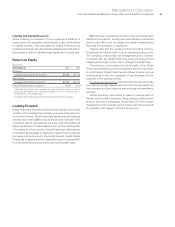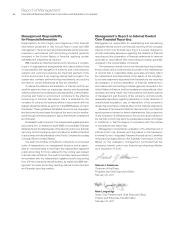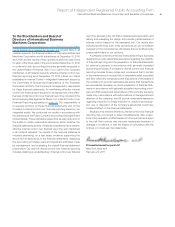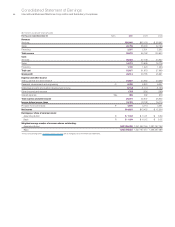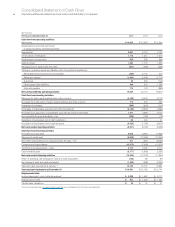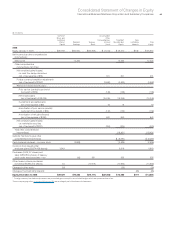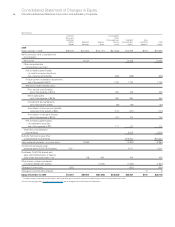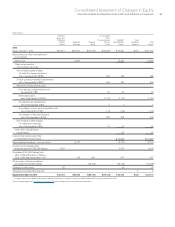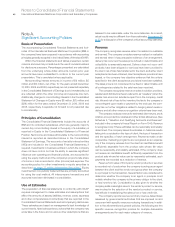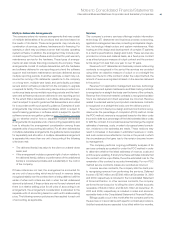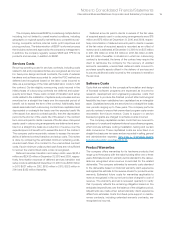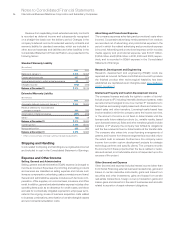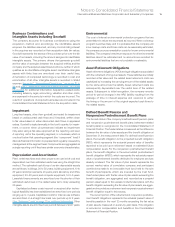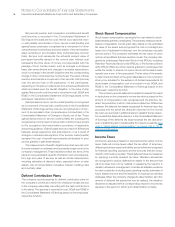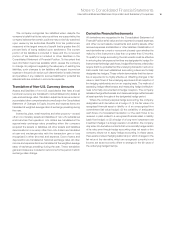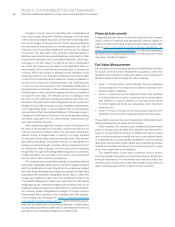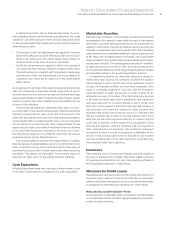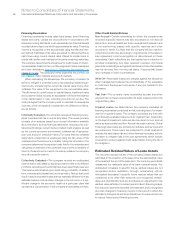IBM 2010 Annual Report Download - page 71
Download and view the complete annual report
Please find page 71 of the 2010 IBM annual report below. You can navigate through the pages in the report by either clicking on the pages listed below, or by using the keyword search tool below to find specific information within the annual report.
Notes to Consolidated Financial Statements
International Business Machines Corporation and Subsidiary Companies 69
Multiple-Deliverable Arrangements
The company enters into revenue arrangements that may consist
of multiple deliverables of its products and services based on
the needs of its clients. These arrangements may include any
combination of services, software, hardware and/or financing. For
example, a client may purchase a server that includes operating
system software. In addition, the arrangement may include post-
contract support for the software and a contract for post-warranty
maintenance service for the hardware. These types of arrange-
ments can also include financing provided by the company. These
arrangements consist of multiple deliverables, with the hardware
and software delivered in one reporting period and the software
support and hardware maintenance services delivered across
multiple reporting periods. In another example, a client may out-
source the running of its datacenter operations to the company
on a long-term, multiple-year basis and periodically purchase
servers and/or software products from the company to upgrade
or expand its facility. The outsourcing services are provided on a
continuous basis across multiple reporting periods and the hard-
ware and software products are delivered in one reporting period.
To the extent that a deliverable in a multiple-deliverable arrange-
ment is subject to specific guidance that deliverable is accounted
for in accordance with such specific guidance. Examples of such
arrangements may include leased hardware which is subject to
specific leasing guidance or software which is subject to specific
software revenue recognition guidance (see “Software” on page
70) on whether and/or how to separate multiple-deliverable
arrangements into separate units of accounting (separability) and
how to allocate the arrangement consideration among those
separate units of accounting (allocation). For all other deliverables
in multiple-deliverable arrangements, the guidance below is applied
for separability and allocation. A multiple-deliverable arrangement
is separated into more than one unit of accounting if the following
criteria are met:
• The delivered item(s) has value to the client on a stand-alone
basis; and
• If the arrangement includes a general right of return relative to
the delivered item(s), delivery or performance of the undelivered
item(s) is considered probable and substantially in the control
of the company.
If these criteria are not met, the arrangement is accounted for
as one unit of accounting which would result in revenue being
recognized ratably over the contract term or being deferred until the
earlier of when such criteria are met or when the last undelivered
element is delivered. If these criteria are met for each element and
there is a relative selling price for all units of accounting in an
arrangement, the arrangement consideration is allocated to the
separate units of accounting based on each unit’s relative selling
price. The following revenue policies are then applied to each unit
of accounting, as applicable.
Services
The company’s primary services offerings include information
technology (IT) datacenter and business process outsourcing,
application management services, consulting and systems integra-
tion, technology infrastructure and system maintenance, Web
hosting and the design and development of complex IT systems
to a client’s specifications (design and build). These services are
provided on a time-and-material basis, as a fixed-price contract
or as a fixed-price per measure of output contract and the contract
terms range from less than one year to over 10 years.
Revenue from IT datacenter and business process outsourcing
contracts is recognized in the period the services are provided
using either an objective measure of output or on a straight-line
basis over the term of the contract. Under the output method, the
amount of revenue recognized is based on the services delivered
in the period.
Revenue from application management services, technology
infrastructure and system maintenance and Web hosting contracts
is recognized on a straight-line basis over the terms of the contracts.
Revenue from time-and-material contracts is recognized as labor
hours are delivered and direct expenses are incurred. Revenue
related to extended warranty and product maintenance contracts
is recognized on a straight-line basis over the delivery period.
Revenue from fixed-price design and build contracts is recog-
nized under the percentage-of-completion (POC) method. Under
the POC method, revenue is recognized based on the labor costs
incurred to date as a percentage of the total estimated labor costs
to fulfill the contract. If circumstances arise that change the original
estimates of revenues, costs, or extent of progress toward comple-
tion, revisions to the estimates are made. These revisions may
result in increases or decreases in estimated revenues or costs,
and such revisions are reflected in income in the period in which
the circumstances that gave rise to the revision become known
by management.
The company performs ongoing profitability analyses of its
services contracts accounted for under the POC method in order
to determine whether the latest estimates of revenue, costs and
profits require updating. If at any time these estimates indicate that
the contract will be unprofitable, the entire estimated loss for the
remainder of the contract is recorded immediately. For non-POC
method service contracts, losses are recorded as incurred.
In some services contracts, the company bills the client prior
to recognizing revenue from performing the services. Deferred
income of $7,195 million and $7,066 million at December 31, 2010
and 2009, respectively, is included in the Consolidated Statement
of Financial Position. In other services contracts, the company
performs the services prior to billing the client. Unbilled accounts
receivable of $2,244 million and $2,020 million at December 31,
2010 and 2009, respectively, is included in notes and accounts
receivable-trade in the Consolidated Statement of Financial Position.
Billings usually occur in the month after the company performs
the services or in accordance with specific contractual provisions.
Unbilled receivables are expected to be billed within four months.


